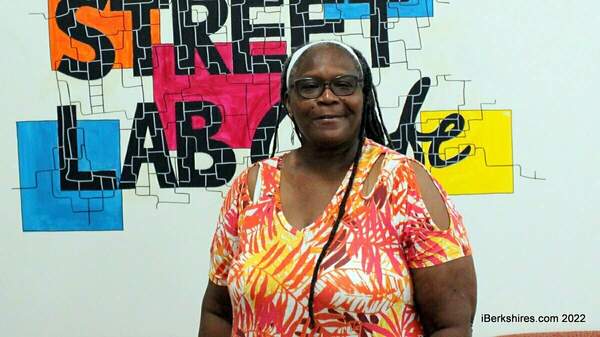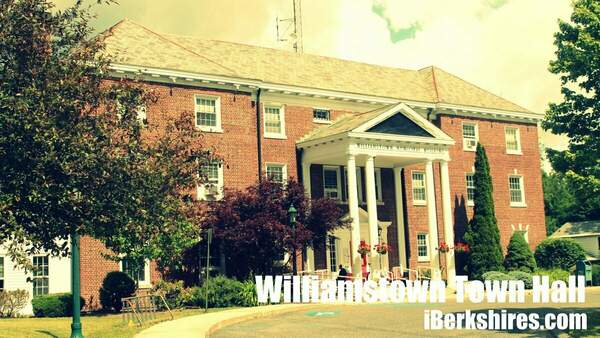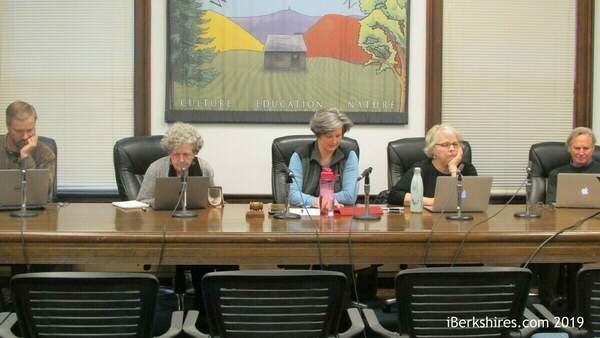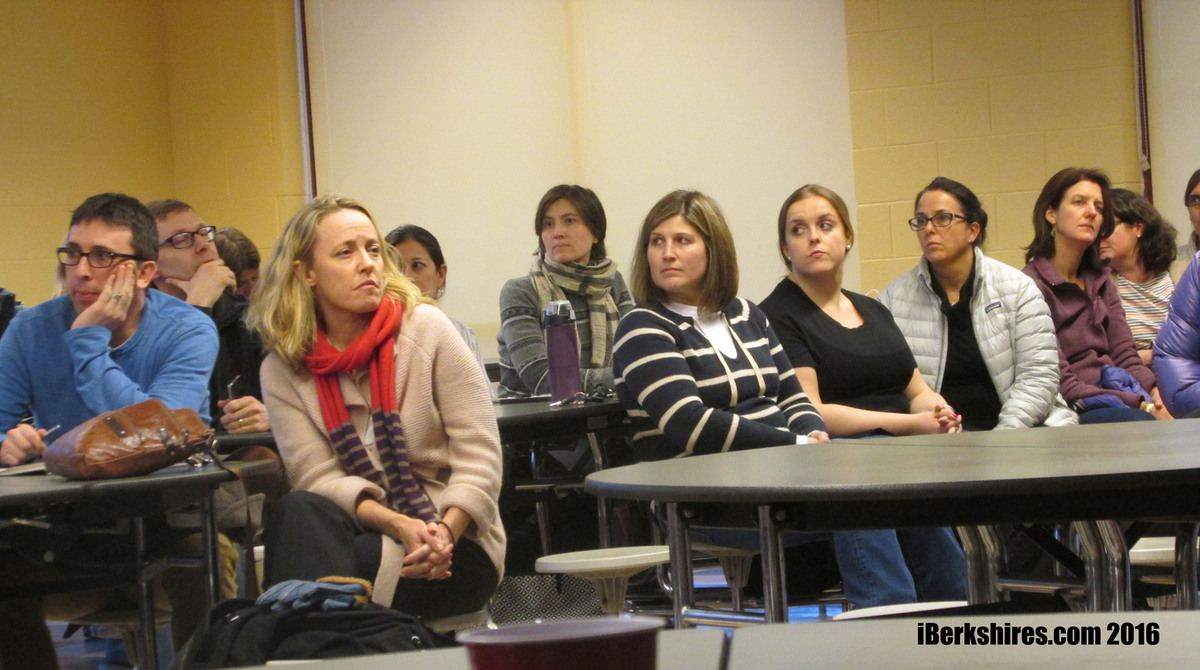
Williamstown Superintendent Explains School Cuts to Parents
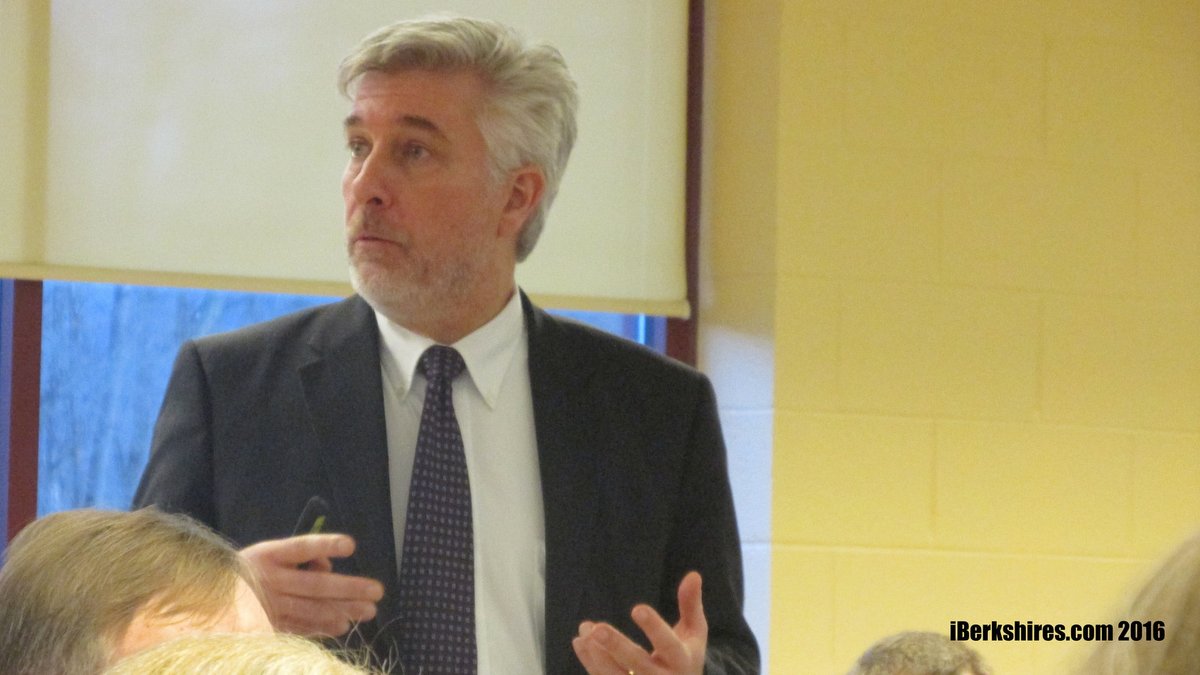
WILLIAMSTOWN, Mass. — Williamstown Elementary School Superintendent Douglas Dias faced a crowd of about 70 people on Thursday evening to explain the constraints that are shaping the district's fiscal 2017 budget.
The elementary school is facing cuts that include two teachers, four paraprofessionals, several enrichment programs and the reduction of its pre-kindergarten Side by Side program from the current full-day program to two half-day sessions.
Even with all those cuts, the budget as it currently stands represents a 3.79 percent increase from FY16, Dias told the group gathered in the school's cafeteria.
The School Committee will hold its formal public hearing and vote to send its budget to the town Wednesday, starting at 6 p.m., in the school's auditorium.
Dias began Thursday's meeting, sponsored by the Parent-Teacher Organization, by explaining how the budget is constructed and the circumstances that led to the proposed cuts.
In addition to a 14 percent spike in health insurance costs that is rippling through the county's municipal budgets, Dias also is dealing with a budget picture clouded by a dwindling reserve fund.
Dias explained that as recently as FY12, the district closed the books with a school choice reserve of $326,788. Those closing balances dropped in each of the succeeding years down to where he expects FY16 to close with about $57,000 — assuming there are no additional unforeseen overages in a fiscal year that has four more months to go.
The precipitous drop in the reserve fund worries the first-year superintendent.
"The biggest reserve fund districts use is school choice," he said. "We save for unexpected, unforeseen expenses, like new boilers. Fortunately, we have a building fund [funded by Williams College at the time the school was built], but what if all of a sudden there is a large influx of kids?"
Schools receive about $5,000 per school choice student, a student who lives outside the district but takes one of the choice seats allotted by the School Committee to help fill empty chairs in under-enrolled classes.
The problem, Dias said, is that the school choice reserve has been used to fund operating expenses. In the current fiscal year, four teaching positions are being budgeted out of the school choice reserve.
"I do not like to have choice used to fund staff because choice revenue waxes and wains," Dias said. "What if people, for whatever reason, choose not to come? What if we decide we're full and don't take any new choice students in a given year?"
Dias was clear that he was not blaming anyone for the current situation.
"I'm really focusing on the future and not the past," he said.
"I'm not faulting anyone, but that is the decision that was made."
And, in fact, the School Committee did discuss the danger of relying on school choice revenue as far back as its March 2013 budget deliberations.
At Thursday's meeting, parent Steve Narey pointed out that the issue had been raised in the sparsely attended committee hearings, and current School Committee Chairman Dan Caplinger agreed.
"The trend was anticipated, but the magnitude was a surprise," Caplinger said.
Dias, in formulating his first budget for the elementary school, was hit with a perfect storm: the need to move operating expenses back into the "regular" budget, a desire to rebuild a depleted reserve and the health insurance hit.
The administration's first pass at the budget, reported to the School Committee on Feb. 10, included the first round of spending cuts and a 4.6 percent hike in the town's contribution. It was clear when the town manager presented his initial budget to the Finance Committee on Feb. 17 that the school would face tough sledding at Town Hall.
Dias said his meetings with town officials have been cooperative, and the town is supportive of the school's needs. But the town budget was built with a "placeholder" 2.5 percent increase in the elementary school budget, and that is what Town Hall was expecting — an increase in line with recent years.

Based on his discussions with the town, Dias added to the list of items trimmed from the budget. At one point, the list included: two teachers, five paraprofessionals (one from pre-K), the mid-day pre-K bus, snacks for the Side by Side program, a speech and language pathologist assistant, a math interventionist, a part-time custodian, fewer hours for the school psychologist (from full time to .6 full-time equivalent or FTE), fewer hours for the occupational therapist (from .8 to .5 FTE), fewer hours for the library (from full time to .8 FTE), fewer hours for the music department, fewer hours for the art teacher, technology upgrades, supplies, text books and four enrichment programs: the math club, garden club, collaboration with Shakespeare and Company and the Lego Robotics club.
In addition, Dias gave up on the idea of funding two positions in the Lanesborough-Williamstown Tri-District: a director of curriculum instruction and technology and a facilities coordinator. Both positions are critical needs for the collaboration of Williamstown, Lanesborough Elementary and Mount Greylock Regional School, Dias has told all three school committees.
"What frustrated me was that some of these programs, when I started this process, were things I was holding up as things I absolutely did not want to cut," Dias said.
Many in Thursday's crowd — largely parents with a handful of faculty and staff — were frustrated as well.
One parent asked if Dias knew about the budgetary "car crash" when the district added an assistant principal position last year.
"I added the assistant principal," Dias said. "It was recommended when I got here, and based on what I saw, I agreed."
Dias said an 400-pupil elementary school like Williamstown should have the position to alleviate some of the burden on the principal.
"And," he said, "I did it out of choice funds. I admit it. Because at the time, based on what was predicted for choice [reserves], it was sustainable."
In fact, Dias' current budget plan calls for continuing to use choice funds — about 70 percent of what the district expects to have available — to apply against the budget. That plus about $95,000 in increased revenue from the town allows Dias to restore some of the items that at one time have been trimmed, including: .2 FTE for the school psychologist (back to .8 FTE), .1 to the occupational therapist (back to .7 FTE), .2 FTE to the librarian (back to full time), the .4 FTE for the music department and the .2 FTE to the art department.
The budget remains a work in progress, Dias emphasized, calling the FY17 budget season a roller-coaster.
"I was in the merchant marines," he said. "I used to work on ships. I also got violently seasick. Putting this together reminds me of that."
Dias said the school is going to need to look for additional funds (grants, donations, fundraisers) to support some of its enrichment programs, which parents noted on Thursday, are among the things that draw families to Williamstown and generate school choice funds in the first place.
Principal Joelle Brookner on Thursday said the costs of such programs range from $3,000 to $12,000.
While some items may fall out or go back into the budget before the town meeting warrant article is finalized this spring, Dias gave no indication Thursday that he plans to reinstitute the full-day Side by Side program.
He said the school's pre-kindergarten is intended to serve the needs of special-needs preschoolers by educating them in an environment where they are mainstreamed — taught side by side — with an equal number of general education peers (whose families pay tuition). Dias said the administration believes it can continue to serve the intended population with the two half-day programs.
"It seems to me your philosophy is it needs to meet the state minimum," a member of the audience asked Dias. "The non-special education students don't seem to be a priority [in Side by Side]."
Dias replied: "I do believe in early education, but public schools are not in the preschool business. Side by Side is a program to provide mandated services. You're correct."
School Committee member Richard Reynolds defended the superintendent and simultaneously suggested his fellow parents keep fighting for restorations.
"I get it," Reynolds said. "My son was in Side by Side and received services. Doug [Dias] has shown leadership. The budget is out earlier than usual, and it's transparent.
"There's a chance now to go to Doug and say, 'These are things we value.' It's going to cost more than 2.5 percent. We have to take that to the town."
Tags: fiscal 2017, preschool, school budget, WES, williamstown_budget,




